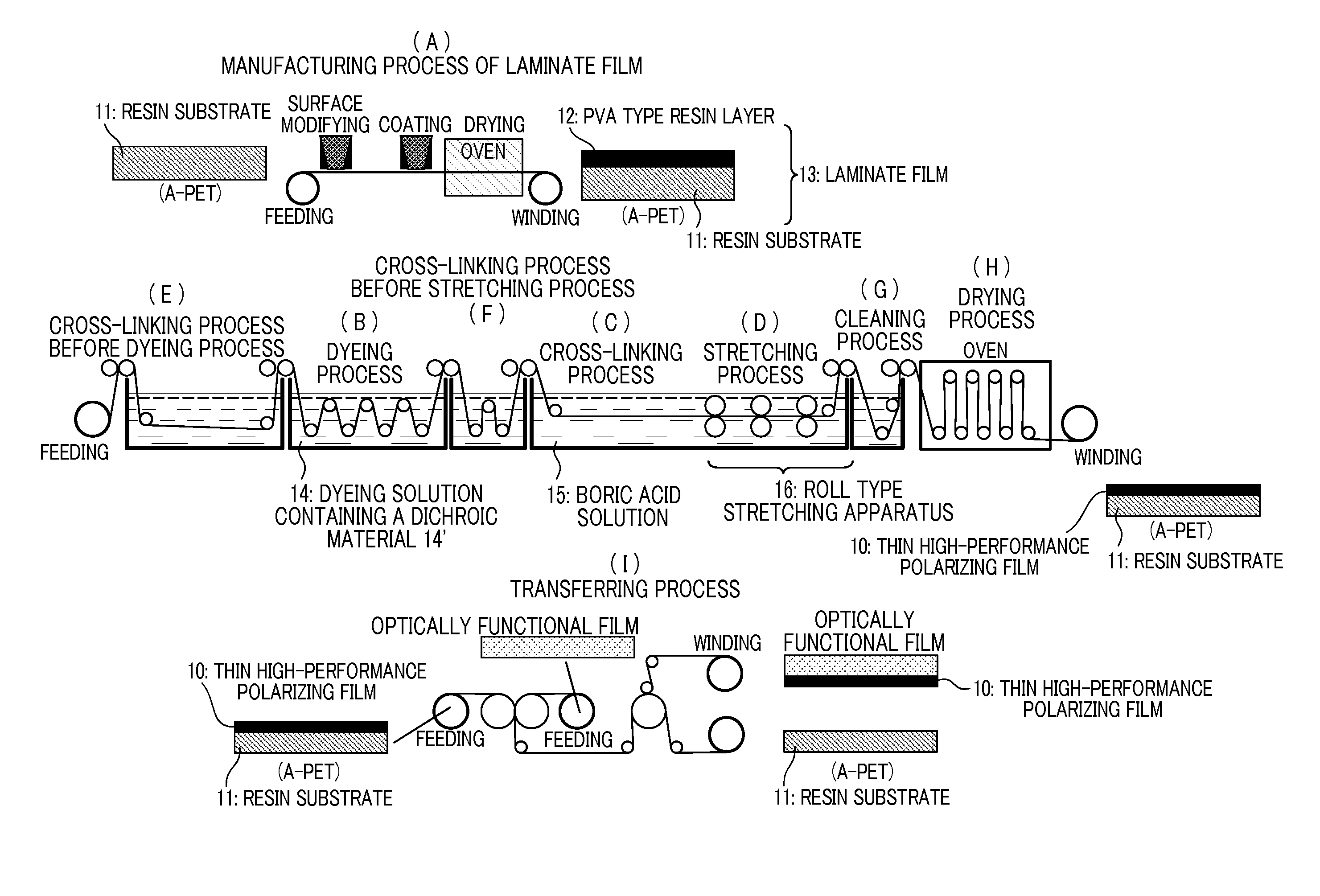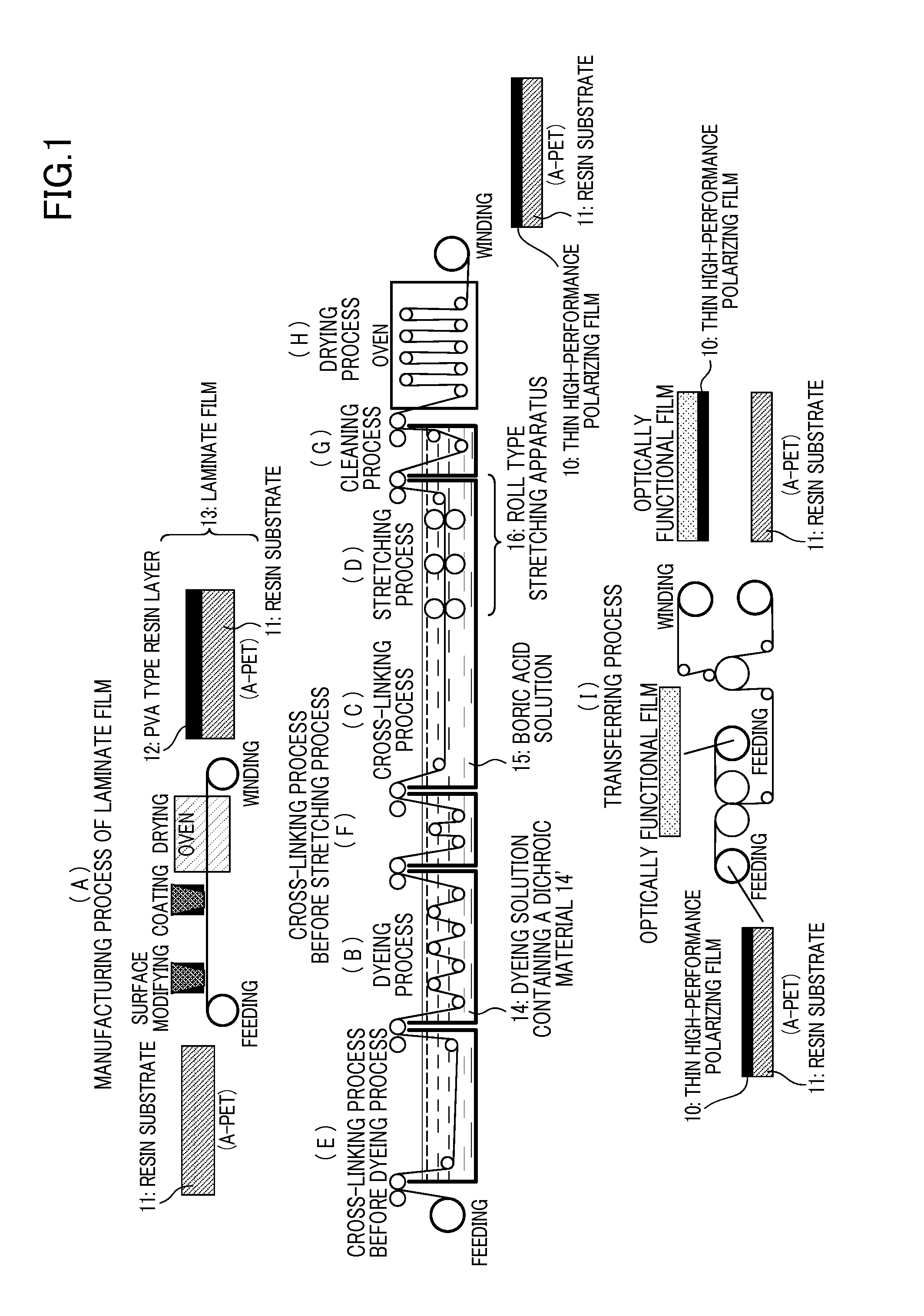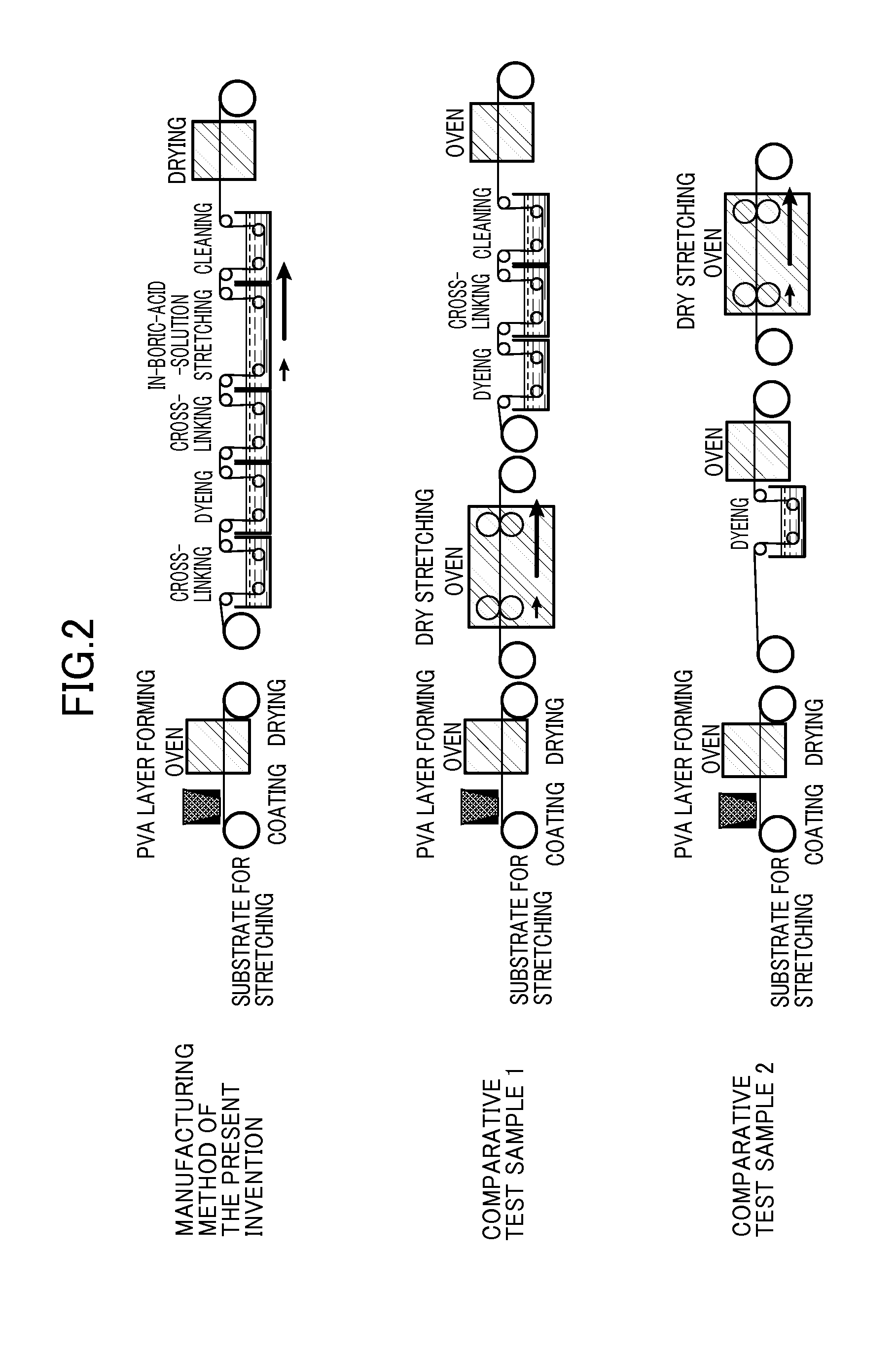Thin high-performance polarizing film and method for manufacturing the same
a polarizing film, high-performance technology, applied in the direction of polarizing elements, instruments, applications, etc., can solve the problems of film dissolving in the solution, thick polarizing film, distortion of the displayed image in the liquid crystal display element, etc., to achieve low optical properties, high magnification rate, and low optical properties
- Summary
- Abstract
- Description
- Claims
- Application Information
AI Technical Summary
Benefits of technology
Problems solved by technology
Method used
Image
Examples
example 1
[0078]Non-crystallized polyethylene terephthalate film (Nova Clear available from Mitsubishi Plastics, Inc.) with a glass-transition temperature of 80° C. was used as the resin substrate. A laminate film including the resin substrate and a polyvinyl alcohol layer was manufactured as follows. First, 100 μm-thick resin substrate was prepared. A solution of polyvinyl alcohol (NH26 from Nippon Synthetic Chemical Industry Co., Ltd.) was coated on the resin substrate to form a 10 μm-thick polyvinyl alcohol layer and dried the polyvinyl alcohol layer under a temperature of 60° C.
[0079]The laminate film manufactured in the aforementioned process was immersed for an arbitrary time in dyeing solution containing iodine and potassium iodide at a solution temperature of 30° C. such as to obtain a final polarizing film having a single layer transmittance of 40 to 44%. Through the process, iodine was impregnated in the polyvinyl alcohol layer. Iodine content in dyeing solution was 0.1 parts by wei...
example 2
[0082]A polymethylpentene film (TPX from Mitsui Chemicals, Inc.) having a glass-transition temperature of 30° C. was used as the resin substrate. In Example 2, similarly as in Example 1, a laminate film including polyvinyl alcohol layer formed on the resin substrate and having iodine impregnated therein was uniaxially stretched in the longitudinal direction through a plurality of pairs of rolls driven with different peripheral speeds, in a boric acid solution containing boric acid and potassium iodide at a solution temperature of 60° C., up to immediately before a point where breaking occurs in the laminate film. Stretching ratio (maximum stretching ratio) in this instance was 5.5.
[0083]Herein, the “immediately before a point where breaking occurs” and the “maximum stretching ratio,” as in Example 1, refer to a stretching ratio smaller by 0.2 than the preliminarily confirmed stretching ratio at which the laminate film was broken. In this manner, a 3 μm-thick polyvinyl alcohol resin ...
PUM
| Property | Measurement | Unit |
|---|---|---|
| transmittance | aaaaa | aaaaa |
| transmittance | aaaaa | aaaaa |
| thickness | aaaaa | aaaaa |
Abstract
Description
Claims
Application Information
 Login to View More
Login to View More - R&D
- Intellectual Property
- Life Sciences
- Materials
- Tech Scout
- Unparalleled Data Quality
- Higher Quality Content
- 60% Fewer Hallucinations
Browse by: Latest US Patents, China's latest patents, Technical Efficacy Thesaurus, Application Domain, Technology Topic, Popular Technical Reports.
© 2025 PatSnap. All rights reserved.Legal|Privacy policy|Modern Slavery Act Transparency Statement|Sitemap|About US| Contact US: help@patsnap.com



